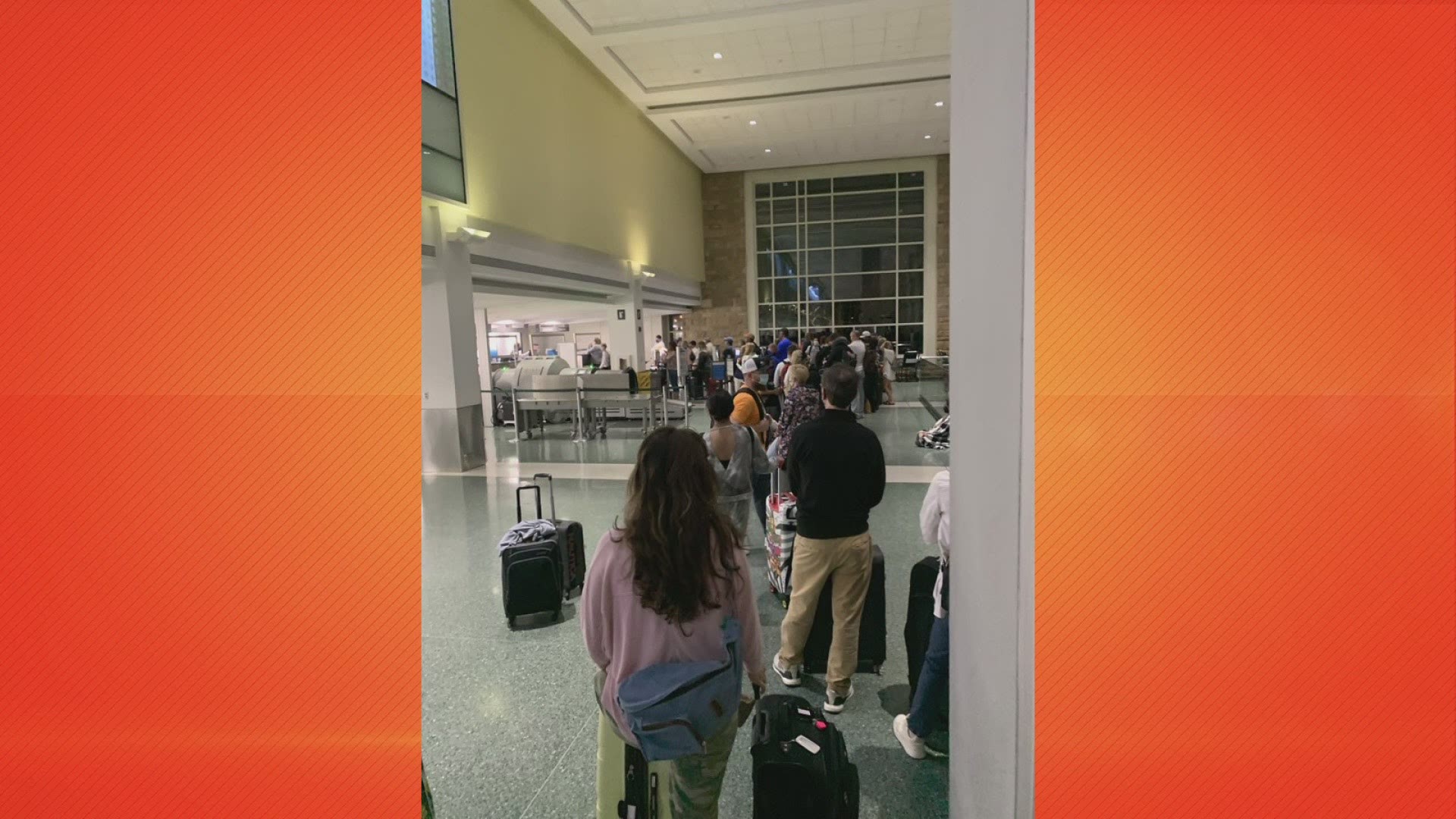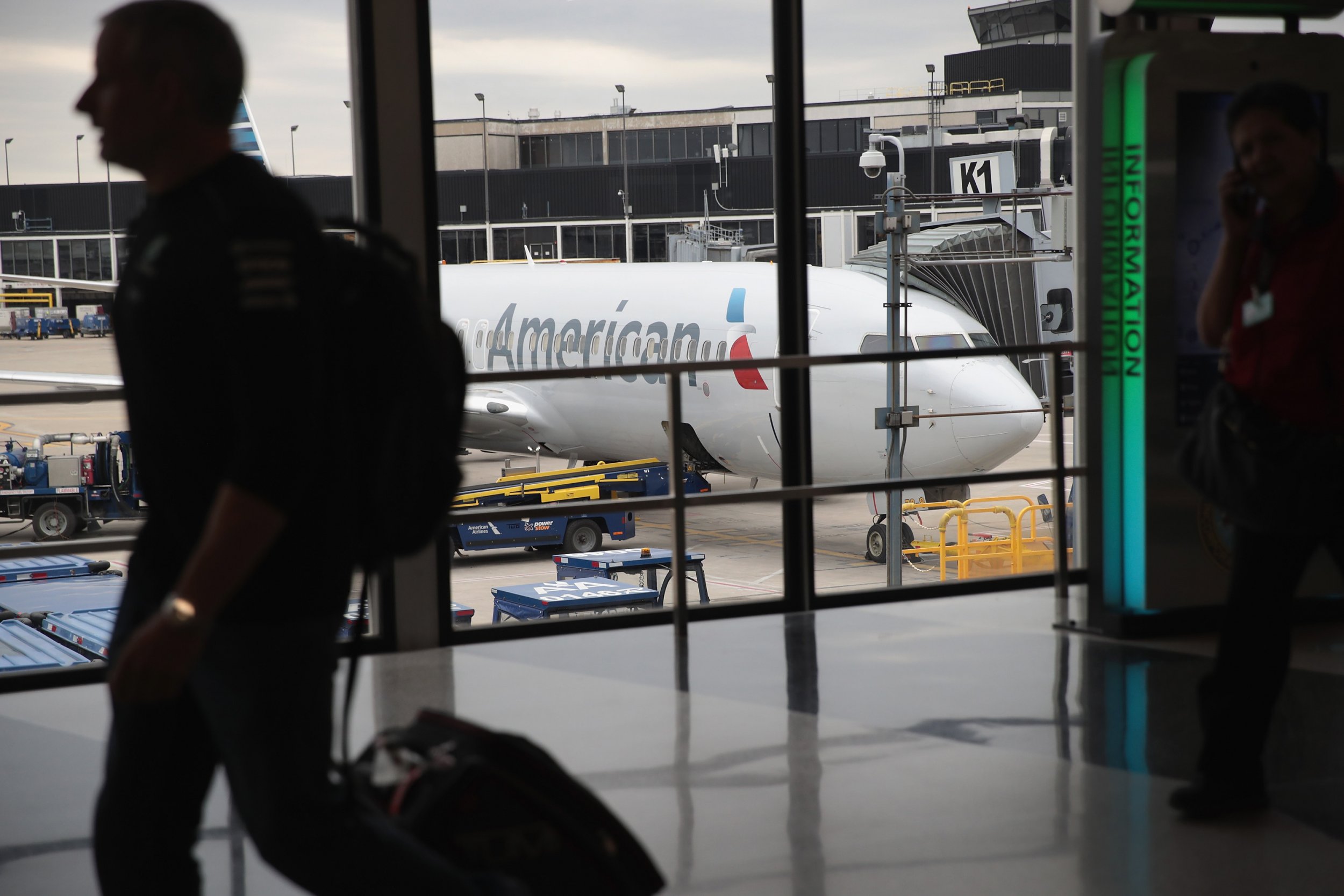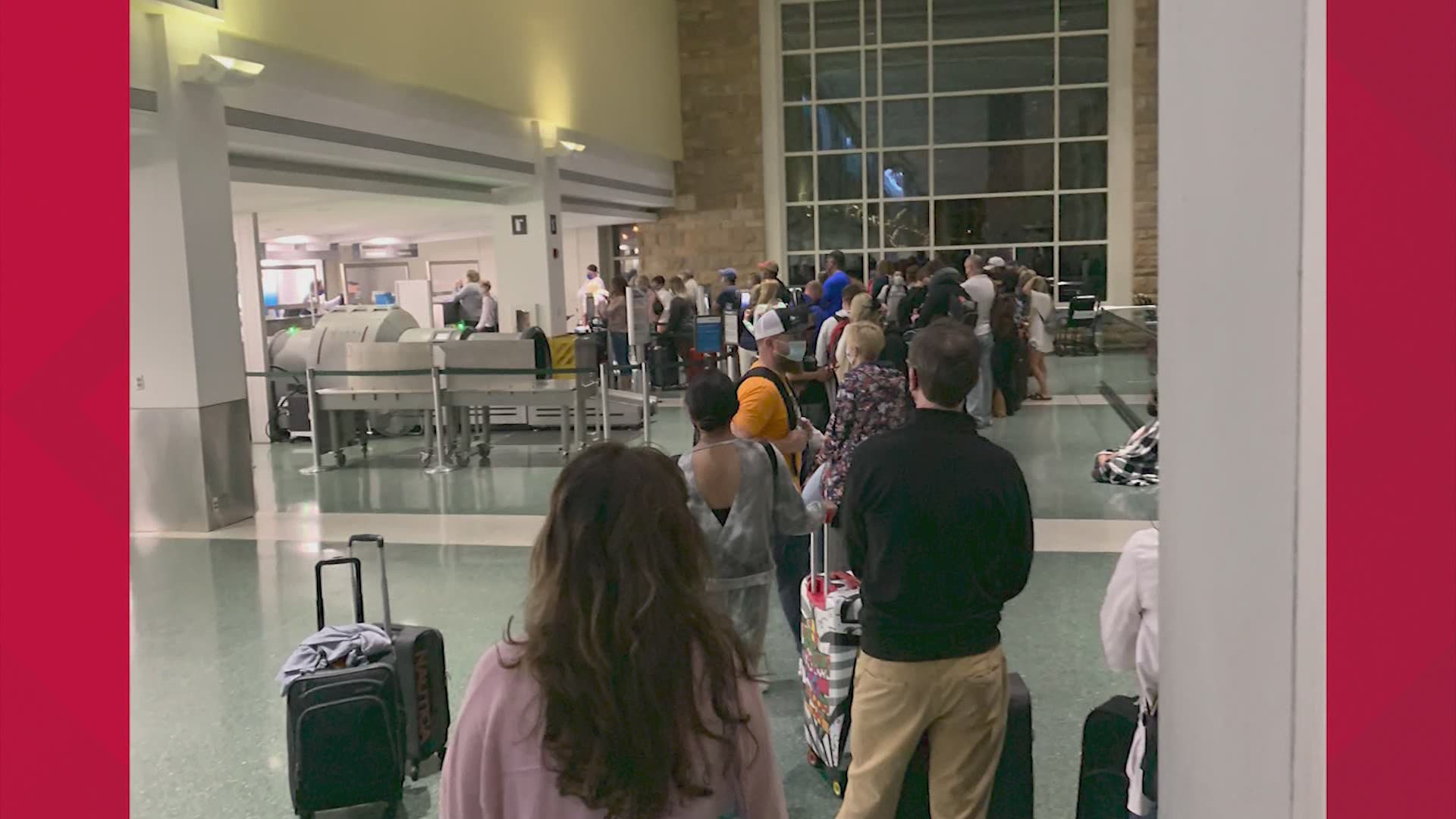American Airlines System Down: What Happened And How It Impacted Travelers
It's no secret that technology plays a massive role in the airline industry. But what happens when one of the biggest airlines in the world experiences a system outage? American Airlines recently faced a major disruption, leaving thousands of travelers stranded and frustrated. In this article, we’ll dive deep into the American Airlines system down incident, uncover the causes, and explore how it affected passengers. So buckle up, grab a snack, and let’s get into it!
When you hear "American Airlines system down," your mind probably goes straight to chaos—and for good reason. The airline’s IT infrastructure is like the backbone of its operations. If it glitches, everything falls apart. From booking tickets to checking in and even managing flights, every process relies on a smooth-running system. But sometimes, even the best-laid plans go sideways.
This isn’t just about tech issues; it’s about real people dealing with real problems. Passengers who planned their trips weeks or months in advance suddenly found themselves stuck in limbo. Flights delayed, connections missed, and vacations ruined—all because of a tech hiccup. But don’t worry, we’re here to break it all down for you.
- Gardening Coloring Page The Perfect Way To Combine Creativity And Nature
- Unveiling The World Of Talent Musicians Your Ultimate Guide
What Caused the American Airlines System Down Incident?
Let’s talk about the elephant in the room: why did the system crash? While American Airlines hasn’t released all the details, industry experts believe it was likely due to a software glitch or hardware failure. Think of it like this—if your phone freezes while you’re scrolling through social media, imagine that happening on a much larger scale, affecting millions of users.
Some insiders suggest the problem might have stemmed from outdated technology. Airlines often use legacy systems that have been patched over the years, and these can be prone to errors. Others point to human error as a possible culprit. Either way, the result was the same: widespread disruption across American Airlines’ network.
Breaking Down the Tech Failure
Here’s where things get interesting. When an airline’s system goes down, it’s not just one department that’s affected. The ripple effect is massive. Check-in kiosks stop working, boarding passes can’t be issued, and flight schedules go haywire. It’s like a domino effect, except instead of harmless falling blocks, you’ve got angry passengers and frazzled staff.
- Tom Cruise Worth 2024 The Untold Story Of A Hollywood Legendrsquos Net Worth
- Funk Up Town The Ultimate Guide To Groovy Urban Vibes
- Booking systems go offline
- Flight operations are delayed
- Customer service lines are overwhelmed
- Passengers are left stranded at airports
And let’s not forget the financial impact. Every minute a flight is delayed costs the airline money, and that adds up fast when you’re talking about hundreds of flights per day. But hey, at least you’ve got some free time to grab a coffee… right?
How Did American Airlines Handle the Crisis?
Okay, so the system went down—what did American Airlines do about it? Initially, the response was slow, which only fueled passenger frustration. But eventually, the airline kicked into high gear, working around the clock to restore services. They brought in extra staff, set up manual check-in procedures, and even issued travel vouchers to affected customers.
But was it enough? Some travelers argue that more could have been done to minimize the disruption. For example, clearer communication throughout the ordeal might have helped manage expectations. Instead, many passengers were left in the dark, unsure of whether their flights would take off—or if they’d ever leave the terminal.
Steps Taken to Resolve the Issue
American Airlines implemented several measures to address the crisis:
- Deployed additional staff to assist passengers
- Set up manual processes for check-in and boarding
- Provided travel vouchers and refunds to impacted customers
- Increased communication via social media and customer service channels
While these efforts were appreciated by some, others felt they fell short. After all, when you’re sitting in an airport lounge for hours on end, a tweet isn’t going to cut it.
The Impact on Passengers
Now, let’s shift our focus to the people who really bore the brunt of this mess: the passengers. Imagine showing up for your long-awaited vacation, only to find out your flight’s been canceled. Or worse, you make it to your destination, but your luggage doesn’t. It’s enough to make anyone lose their cool.
Here’s a quick rundown of how the American Airlines system down incident affected travelers:
- Flight cancellations and delays
- Missed connections
- Lost luggage
- Increased stress and frustration
For frequent flyers, this kind of disruption is a nightmare. They rely on airlines to deliver them safely and efficiently to their destinations. When that trust is broken, it’s hard to rebuild.
Real Stories from Affected Passengers
To give you a better sense of the chaos, let’s hear from a few passengers who experienced the American Airlines system down firsthand:
“I was supposed to fly to Miami for a wedding, but my flight got canceled last minute. I ended up driving, which took forever. It was a disaster,” said Sarah L., a frustrated traveler.
Another passenger, John D., shared his experience: “The check-in kiosks weren’t working, and the lines for manual check-in were insane. By the time I got to the gate, my flight had already left.”
Stories like these highlight the human side of the issue. Behind every statistic is a real person dealing with real consequences.
Lessons Learned from the Outage
So, what can we learn from this whole debacle? First and foremost, it’s clear that airlines need to invest more in their IT infrastructure. Outdated systems may save money in the short term, but they can cost a fortune when they fail. And let’s face it, in today’s fast-paced world, no one has time for tech issues.
Another key takeaway is the importance of communication. During a crisis, keeping passengers informed is crucial. Whether it’s through social media, email updates, or even text messages, transparency goes a long way in easing tensions.
Best Practices for Airlines
Here are some best practices airlines can adopt to prevent similar incidents in the future:
- Regularly update and maintain IT systems
- Implement backup solutions for critical processes
- Enhance communication strategies during disruptions
- Train staff to handle large-scale outages effectively
By taking these steps, airlines can minimize the risk of future outages and ensure smoother operations for everyone involved.
Preventing Future Disruptions
Prevention is always better than cure, and that holds true for airline systems too. To avoid another American Airlines system down incident, the company needs to take proactive measures. This includes investing in modern technology, conducting regular maintenance checks, and having contingency plans in place.
Additionally, airlines should consider adopting cloud-based solutions, which offer greater flexibility and scalability. By moving away from legacy systems, they can reduce the likelihood of unexpected failures.
The Role of Technology in Airline Operations
Technology is the backbone of modern aviation. From booking platforms to flight management systems, every aspect of airline operations relies on tech. That’s why it’s so important for airlines to prioritize innovation and stay ahead of the curve.
As one industry expert put it, “The airline industry is only as strong as its weakest link. If that link happens to be outdated technology, it’s only a matter of time before something goes wrong.”
Customer Expectations in the Digital Age
In today’s digital age, customers expect seamless experiences from start to finish. They want to book their flights with a few clicks, check in effortlessly, and breeze through security without a hitch. When something disrupts that flow, it’s bound to cause frustration.
American Airlines’ system down incident serves as a reminder of how crucial technology is to meeting customer expectations. Airlines that fail to adapt risk losing business to competitors who prioritize innovation.
Meeting and Exceeding Customer Needs
So, how can airlines meet—and exceed—customer expectations? By focusing on three key areas:
- Investing in cutting-edge technology
- Providing exceptional customer service
- Ensuring transparency during disruptions
When done right, these efforts can build trust and loyalty among passengers, turning potential disasters into opportunities for growth.
Conclusion: Moving Forward After the American Airlines System Down Incident
As we’ve seen, the American Airlines system down incident was a wake-up call for the airline industry. It highlighted the importance of robust IT infrastructure, effective communication, and proactive measures to prevent future disruptions. While the fallout was significant, it also presented an opportunity for American Airlines to learn and improve.
So, what’s next? For passengers, it’s about holding airlines accountable and demanding better service. For airlines, it’s about investing in technology and prioritizing customer satisfaction. Together, we can ensure that incidents like this become a thing of the past.
Before you go, we’d love to hear your thoughts. Did you experience the American Airlines system down incident firsthand? What do you think the airline could have done differently? Drop a comment below and let’s keep the conversation going!
Table of Contents
- What Caused the American Airlines System Down Incident?
- Breaking Down the Tech Failure
- How Did American Airlines Handle the Crisis?
- Steps Taken to Resolve the Issue
- The Impact on Passengers
- Real Stories from Affected Passengers
- Lessons Learned from the Outage
- Best Practices for Airlines
- Preventing Future Disruptions
- The Role of Technology in Airline Operations
- Customer Expectations in the Digital Age
- Meeting and Exceeding Customer Needs



Detail Author:
- Name : Leonel Leffler II
- Username : tiara48
- Email : tommie.okuneva@gmail.com
- Birthdate : 1987-05-12
- Address : 118 Ryan Ford Lake Westley, WV 54268
- Phone : 938.849.5367
- Company : Bailey Group
- Job : Mold Maker
- Bio : Cupiditate aperiam nesciunt praesentium ullam rerum facere enim. Optio id impedit commodi distinctio esse exercitationem distinctio quia. Est placeat expedita cum repudiandae voluptas enim.
Socials
twitter:
- url : https://twitter.com/mhackett
- username : mhackett
- bio : Quam expedita consequuntur voluptatem est delectus deserunt. Inventore nihil facere qui deleniti voluptates velit non. Est ut accusamus itaque rerum.
- followers : 5315
- following : 1222
instagram:
- url : https://instagram.com/hackett1989
- username : hackett1989
- bio : Repudiandae odit aut ea atque. Sunt assumenda id autem recusandae sed expedita esse qui.
- followers : 3080
- following : 1806